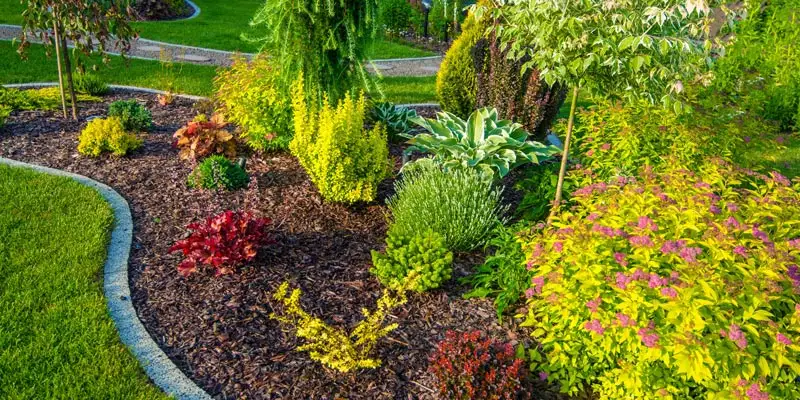Top Guidelines Of Landscape Design
Top Guidelines Of Landscape Design
Blog Article
Little Known Questions About Landscape Design.
Table of ContentsThe 30-Second Trick For Landscape DesignSome Ideas on Landscape Design You Should KnowThe 10-Minute Rule for Landscape Design4 Simple Techniques For Landscape Design
Official style motif. Credit Scores: Gail Hansen, UF/IFAS The backyard is an expansion of the home where a selection of activities occur. A backyard can usually be divided into 3 locations: public (the front lawn), personal (the backyard), and service (normally the side backyard). The place of task areas depends mostly on the kind of area, the dimension of area required, the sort of task, and the desired closeness to various other tasks and frameworks (Landscape Design).
The outdoors wall of your home frequently functions as the first wall or beginning factor of an outside area. Incompatible usages need to be separated, and associated tasks, such as cooking and eating, should be created to make the lawn more effective and pleasurable. When using hardscape to develop spaces, make use of building material comparable to that used in your home for connection from the home into the yard.
Connected rooms. Credit Rating: Gail Hansen, UF/IFAS Using similar hardscape attributes and duplicating plants draws the eye around the garden. Crucial factors in the process can be highlighted with plantings or features that draw attention and urge activity in a specific direction. Moving along the course takes an individual from one location to the next and enables the user to have a range of experiences.
From a style perspective, plant products have three major features in the landscape: aesthetic, architectural and utilitarian. Cosmetically, plants develop a visually pleasant atmosphere and structurally plants organize and specify spaces.
Landscape Design - Truths
For mental comfort plants are utilized as physical or implied obstacles for privacy and safety and security. Physical barriers obstruct both the view and accessibility to an area and include fencings, walls and plant hedges.
Physical and suggested obstacles. Credit History: Gail Hansen, UF/IFAS For these reasons, the kinds of plants to be made use of (such as trees, bushes, or groundcovers) ought to be selected in the beginning of planning. Plant types are chosen for their practical abilities to make sure that their future objective and required room can be considered at the very same time.
The overhead plane, the vertical airplane and the ground airplane ought to all be considered to produce room. As soon as the shape of a plant bed has been developed, the plants must be massed (grouped) and layered to attain visual unity and the desired quantity of unit. The dimension of a plant mass will certainly depend upon the total dimension of the lawn, the size of the specific plants in the mass, and the emphasis or impact desired from the plant product.
Each plant mass is in front of, behind, or next to, one find more information more mass. Number 11. Straight plant layers. Credit Report: Gail Hansen, UF/IFAS Figure 12. Upright plant layers. Credit: Gail Hansen, UF/IFAS Duplicating plants within a mass and repeating masses with similar plants ties the yard with each other. The private plant features have to be thought about to effectively layer and mass plants.
Our Landscape Design Diaries
All plant make-ups begin with the main framework plants, the huge, mainly evergreen background plants-such as the trees and large shrubs. These plants separate or enframe rooms, manage the size of YOURURL.com the room, and supply the starting factor for selecting the proper attributes of the 2nd layer, midground plants, for massing and infill.
Crucial factors in the garden must be highlighted by the use one-of-a-kind plants, unique structures, or garden accessories. Marking limits or entries to areas can be finished with entrances, arbors, and steps, or via using distinct and colorful plants. The kind and/or design theme of the yard will usually help identify the vital points and how they should be highlighted.
Various other vital areas in the yard are focal factors, which is used to visually organize a landscaped location. Various viewpoints or perspectives can expose various compositions in the landscape that might call for a range of focal factors.
Landscape Design for Dummies
Number 13. Plant kinds. Credit Rating: Gail Hansen, UF/IFAS After form, structure is the next leading attribute of a plant; crude, medium and great textures can be used for contrast and focus in the landscape. Form and texture both trump color in the yard for the majority of the year. Nonetheless, throughout certain periods, shade will be the most recognizable quality of the garden.


The pleasant aroma of plants, the sound of wind in the trees, the noise and structure of water, and the colors and structures of sculptures, pots and yard furnishings all contribute to the experience of the garden. One detail that is typically ignored is the result of light on the aesthetic appeals of the plants.
The entire yard modifications in feature and appearance throughout the day, and the program of a year, as the light and temperature adjustment from early explanation morning to evening and season to season. Plant choice have to consider a plant's development rate, its fully grown dimension and type, and the maintenance it will call for.
It is essential to understand the ultimate mature dimension of plants so they can be positioned in the right location and spaced correctly when they are installed. Offering plants space to grow is a difficulty since the typical mature size is generally based upon ideal expanding problems and the ecological conditions of a website may create a plant to grow larger or stay smaller sized.
Report this page